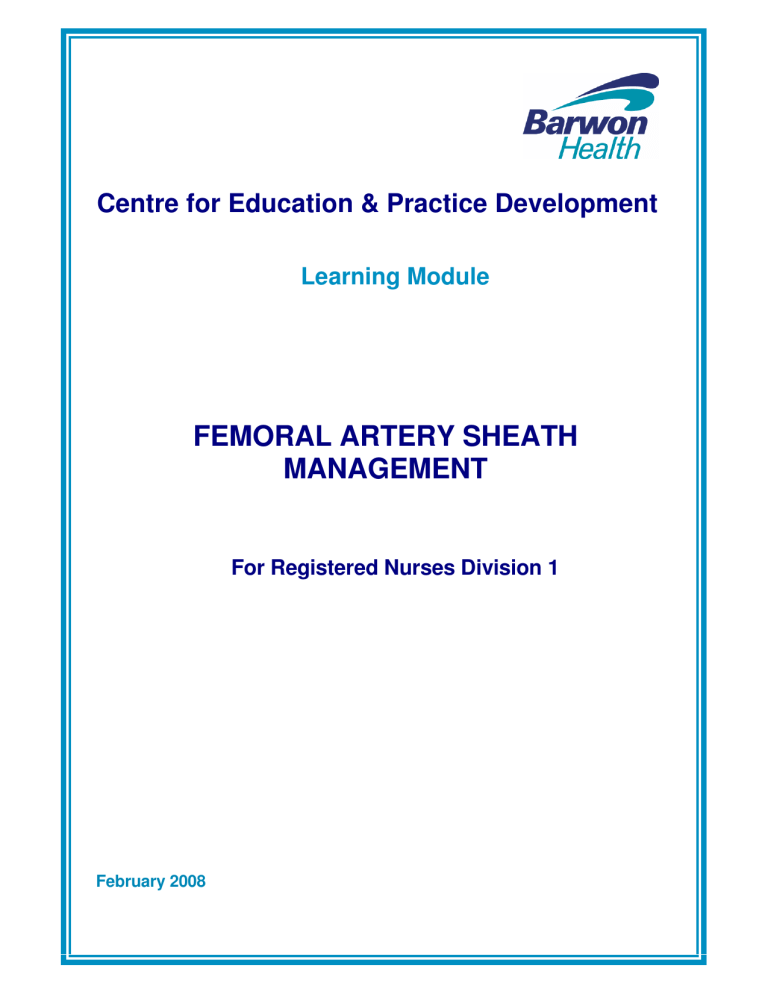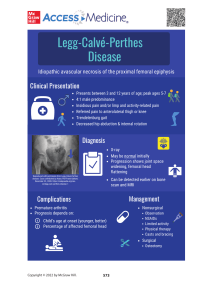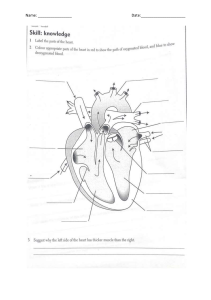
Centre for Education & Practice Development Learning Module FEMORAL ARTERY SHEATH MANAGEMENT For Registered Nurses Division 1 February 2008 Acknowledgment This document has been compiled utilising the existing resources available from the Barwon Health Centre for Education and Practice Development. Barwon Health Centre for Education & Practice Development PO Box 281 Geelong 3220 Enquiries to: (03) 5226 7225 © 2002 Barwon Health This work is copyright. Except as permitted under the Copyright Act 1968(Cth), no part of this document may be reproduced in any form by any means graphically, electronically, mechanically or otherwise, without the express written permission of Barwon Health. In addition, this document and the information herein may not be stored electronically in any form whatsoever without the express written permission of Barwon Health Femoral Artery Sheath Management & Removal Contents 1. INTRODUCTION ......................................................................................................1 1.1 Aim ...............................................................................................................1 1.2 Policy & Procedure Guidelines......................................................................1 1.3 The Competency Process.............................................................................1 1.4 Approved Assessors .....................................................................................1 2. FEMORAL ARTERY CATHETERISATION..............................................................2 2.1 Commonly Used Catheterization Sites..........................................................3 3. MANAGEMENT OF PATIENT WITH FEMORAL ARTERY SHEATH ......................4 3.1 PTCA Sheath Removal Document................................................................4 3.2 On Return to Ward........................................................................................4 3.3 Observations Prior to Sheath Removal .........................................................4 3.4 Fluid Balance ................................................................................................5 3.5 Treat & Report ..............................................................................................5 4. REMOVAL OF FEMORAL ARTERY SHEATH ........................................................6 4.1 The Wilson Technique ..................................................................................6 4.2 Prior to Removal ...........................................................................................6 4.3 Equipment.....................................................................................................6 4.4 Patient Assessment and Preparation ............................................................6 4.5 Procedure .....................................................................................................8 4.6 Observations Following Haemostasis ...........................................................9 4.7 Relative Contraindications to using FemoStop..............................................9 5. PATIENT MANAGEMENT POST HAEMOSTASIS................................................10 5.1 Post Haemostasis-......................................................................................10 5.2 Mobilisation.................................................................................................10 6. MANAGEMENT OF COMPLICATIONS.................................................................11 6.1 Vasovagal ...................................................................................................11 6.2 Bleeding......................................................................................................11 6.3 Haematoma ................................................................................................11 6.4 Ischaemic Limb / Arterial Occlusion ............................................................12 6.5 Infection ......................................................................................................12 7. PATIENT EDUCATION & DISCHARGE INFORMATION ......................................13 7.1 Discharge ...................................................................................................13 7.2 Patient Education........................................................................................13 8. COMPRESSION DEVICES & TECHNIQUES ........................................................14 9. REFERENCE .........................................................................................................15 10. APPENDIX.............................................................................................................16 Femoral Artery Sheath Management & Removal 1. 1.1 INTRODUCTION Aim This learning module is designed for the Registered Nurse Division 1 working in areas where patients are undergoing percutaneous cardiac catheterisation and interventions. It is designed to enable the registered nurse to care for the patient with a femoral arterial or venous sheath insitu, safely remove it and provide follow up care. 1.2 Policy & Procedure Guidelines A Medical Officer or a Registered Nurse Division 1 (RN Div 1) competent in the technique of removal may remove a femoral artery sheath post angiography or percutaneous interventions or investigations. 1.3 The Competency Process To gain competency the RN Div 1 should read the learning package and complete the following with satisfactorily: • Life Threatening Arrhythmia recognition assessment or Crit Care qualification • Attend arterial / venous sheath removal workshop • Demonstrate satisfactory manual pressure technique • Complete a minimum of 3 successful supervised sheath removals • Discuss emergency management of a vasovagal episode associated with femoral artery sheath removal 1.4 Approved Assessors Current assessors in BC5 • • Andrew Katzer Katherine McAvaney Date Complied: February 2008 Reviewed by: Barwon Health Centre for Education & Practice Development k/learning modules/cardiac/2008/ femoral artery sheath Management 1 Femoral Artery Sheath Management & Removal 2. FEMORAL ARTERY CATHETERISATION Percutaneous catheterisation of the femoral artery is accomplished using a modified Seldinger technique. The same technique is used for both arterial and venous access. The femoral approach is the preferred site for catheterisation, although a radial approach may also be used. Location of the femoral stick is important to avoid vascular complications. The ideal puncture site is the common femoral artery. Puncture of the artery at or above the inguinal ligament makes catheter advancement difficult and predisposes to inadequate compression, hematoma formation and retroperitoneal bleeding. Puncture of the artery more than 3 cm below the inguinal ligament increases the chance that the femoral artery will divide into its profunda and superficial branches, puncture into these branches may cause development of a pseudoaneurysm or thrombotic occlusion of a small vessel. Local anaesthetic is administered prior to the introduction of the femoral artery sheath. The femoral artery sheath is generally 4 to 6 French (1.35-2mm) and a guide wire helps to advance the catheter through the sheath into the femoral artery and up into the aorta. When the procedure is completed the catheter is removed through the sheath. The sheath remains insitu until anticoagulants are below their peak action. Intravenous heparin is generally given during the procedure, to minimise the risk of bleeding the sheath is not removed until at least 4 hours after the last dose of heparin was given. In some patients the femoral vein is also used to advance the catheter to the right side of the heart in order to perform haemodynamic measurements and other procedures. Date Complied: February 2008 Reviewed by: Barwon Health Centre for Education & Practice Development k/learning modules/cardiac/2008/ femoral artery sheath Management 2 Femoral Artery Sheath Management & Removal 2.1 Commonly Used Catheterization Sites During cardiac catheterisation the catheter is advanced in a retrograde direction up the aorta, around the aortic arch and into the ostia of the coronary arteries or across the aortic valve into the left ventricle. Date Complied: February 2008 Reviewed by: Barwon Health Centre for Education & Practice Development k/learning modules/cardiac/2008/ femoral artery sheath Management 3 Femoral Artery Sheath Management & Removal 3. MANAGEMENT OF PATIENT WITH FEMORAL ARTERY SHEATH Following cardiac catheterisation for angiogram or angioplasty and stent deployment, the patient may return from the Cardiac Cath Lab (CCL) with a femoral artery sheath insitu. When collecting the patient from the CCL, the RN Div 1 should receive handover of relevant details including: • Procedure performed • Medications given during / post procedure – Check the drug chart is completed and signed • Check intravenous (IV) infusions and rates are as ordered • Observe sheath site for signs of bleeding, swelling or haematoma • Review last vital signs, presence or absence & location of pedal pulses • Determine if the patient has chest discomfort, pain or shortness of breath • Determine orders for time of femoral artery sheath removal and ensure the PTCA Sheath Removal document is completed. 3.1 PTCA Sheath Removal Document This document will include the following details: • Orders for IV fluids or premedication prior to sheath removal • Time and dose of last heparin administration • Size and length of arterial / venous sheath • Orders for first and second line treatment if the patient experiences a vasovagal during sheath removal 3.2 On Return to Ward Patient may sit up to 45° until sheath is removed, unless bleeding occurs, then the patient should be kept flat with pressure applied to groin, either manual or FemoStop applied. Record a 12 Lead ECG on return to ward and if the patient complains of any chest pain. The ECG should be reviewed and compared to a pre procedure ECG. Any chest pain should be reported to Cardiology registrar or Cardiologist. 3.3 Observations Prior to Sheath Removal Continuous cardiac monitoring via bedside monitor or telemetry Hourly vital signs ½ hourly groin and circulation observations including: Pedal pulses and colour, warmth movement and sensation of affected leg & foot Asses insertion site for bleeding, pain, tenderness, swelling or haematoma Date Complied: February 2008 Reviewed by: Barwon Health Centre for Education & Practice Development k/learning modules/cardiac/2008/ femoral artery sheath Management 4 Femoral Artery Sheath Management & Removal 3.4 Fluid Balance If IV Normal Saline infusion is in progress continue as ordered. Emergency PTCA in the setting of acute occlusion or patients known to have significant left ventricular dysfunction should have IV fluids administered cautiously to prevent LVF / APO. If Reopro or Tirofiban infusions are in progress continue as ordered, check when FBE should be taken to check platelets (Usually within 2 hours of infusion commencing) IV GTN should continue as ordered Patients may have oral fluids and normal medication, but should not eat until after sheath removed. Urinary retention may occur whilst the sheath is insitu, monitor urine output and signs of bladder distention or discomfort. A urinary catheter may need to be inserted. 3.5 Treat & Report Chest pain Loss of pedal pulses or limb ischaemia Systolic BP <90 or > 170 or HR <50 or > 110 Date Complied: February 2008 Reviewed by: Barwon Health Centre for Education & Practice Development k/learning modules/cardiac/2008/ femoral artery sheath Management 5 Femoral Artery Sheath Management & Removal 4. 4.1 REMOVAL OF FEMORAL ARTERY SHEATH The Wilson Technique This procedure may be performed by a Medical Officer or RN Div 1 who has completed the assessment process within Barwon Health. Individual assessment of each patient is necessary prior to using a FemoStop device. 4.2 Prior to Removal Review PTCA document for: • • • Time of last heparin dose Time of sheath removal Size and length of sheath 4.3 • • • • • • • • • Equipment FemoStop arch and hand pump and sterile FemoStop pack containing belt, bubble and 3-way tap Sterile gloves and protective eyewear Gauze Waste container for contaminated sheath and soiled equipment. Emergency drugs to be available for potential complications. IV Atropine Extra IV Normal Saline 500 mls Lignocaine 1% in 5 mls if local anaesthetic required (this is given by RMO) Doppler 4.4 Patient Assessment and Preparation 1. Discuss the procedure with the patient. 2. Lay the patient, place blue underpad under the patient and cover the patient with blankets to ensure comfort, privacy and dignity, whilst still able to clearly observe sheath site. 3. Position the FemoStop belt under the patient’s buttocks in line with the puncture site 4. Record and document baseline observations including neurovascular obs of both legs. 5. Ensure continuous bedside monitoring of Vital signs: HR, BP, SaO2 Note Systolic BP >160mmHg or diastolic >100mmHg may require intervention to lower BP prior to removal of sheath. Discuss with the cardiology registrar. 6. Palpate and mark posterior tibial and dorsalis pedis pulses 7. Ensure the patient has patent IV access 8. IV pre medication and fluid bolus are given as per PTCA sheath removal orders. This is usually Morphine 2.5 mgs IV and Normal Saline 9. Assess puncture site for bruising, bleeding or haematoma 10. Assess patient's comfort; consider urinary catheterisation 11. Instruct the patient to keep leg still, head flat and breathe normally and to notify report if they experience any symptoms of vasovagal or discomfort. Date Complied: February 2008 Reviewed by: Barwon Health Centre for Education & Practice Development k/learning modules/cardiac/2008/ femoral artery sheath Management 6 Femoral Artery Sheath Management & Removal Date Complied: February 2008 Reviewed by: Barwon Health Centre for Education & Practice Development k/learning modules/cardiac/2008/ femoral artery sheath Management 7 Femoral Artery Sheath Management & Removal 4.5 Procedure • Remove the bubble from the pack and attach to FemoStop arch. • Attach pressure manometer to 3-way tap and connect to bubble. • Inflate the FemoStop bubble to 280mmHg and turn off 3-way tap. • Remove the dressing from the sheath and clean site with normal saline. • Instruct the patient to slightly abducted and rotate affected leg. • Manually palpate and assess the arterial pulse above and below the sheath. • A doppler is used to assess the peripheral pulse of the affected limb and to determine the amount of pressure required to obliterate the pulse using manual pressure. • Attach the belt to left side of FemoStop arch. • Whilst palpating the femoral pulse, position the centre point of the FemoStop dome approx. 1-2 cms above the puncture site, directly over the femoral artery. • Tension the opposite side of the FemoStop belt to ensure the arch is parallel to the patient’s pelvis, whilst maintaining correct dome position. • Attach the belt loosely to the right side of the FemoStop arch. • Using the doppler assess the pedal pulse, manually apply pressure on the right side of the FemoStop arch until the pedal pulse is occluded (note the pressure at which occlusion occurs) then release this pressure. • Gently remove arterial sheath in a parallel-to-leg direction At the same time apply pressure on the right side of the FemoStop arch synchronise this pressure to occlude the pedal pulse, as the end section of the sheath is withdrawn. Care should be taken not to strip clotted blood, which may be in the sheath. • Tension the right side of the belt to maintain this pressure, completely occlude the pedal pulse for approximately 3 minutes. Observe at all times for bleeding or haematoma formation. Date Complied: February 2008 Reviewed by: Barwon Health Centre for Education & Practice Development k/learning modules/cardiac/2008/ femoral artery sheath Management 8 Femoral Artery Sheath Management & Removal • After 3 minutes reduce tension by adjusting the belt to partially reintroduce the pulses. Doppler assessment of the pedal pulses should reflect partial compression of femoral artery. (‘Whooshing,’ but not full pulse should be heard on doppler). Continue to observe for complications • Pressure is maintained this way for approximately 20 minutes. • After 20 mins gradually reduce the pressure by gently releasing belt tension on the patient's right side. • If no bleeding or haematoma is observed at the site, gently and slowly release the pressure completely (usually at 25 - 30 mins). • Continue to observe the site for bleeding or haematoma. If bleeding or haematoma is noted, then the FemoStop should be re-tensioned to partially compress the artery for a further 10 to 15 minutes before reassessing again for haemostasis. • If no further bleeding or haematoma is observed, remove the FemoStop gently. Observe the puncture site for swelling or bleeding for at least 2 minutes. • Document time of sheath removal, time of haemostasis. • Instruct the patient to keep their leg straight for 6 hours. 4.6 Observations Following Haemostasis • Initially every 5 mins post removal of sheath, then every 15 minutes once haemostasis is achieved. • Vital signs. • Assess affected foot for colour, warmth movement and sensation and pedal pulses by palpation or using Doppler. • Observe puncture site for bleeding, swelling or bruising. 4.7 Relative Contraindications to using FemoStop • Obesity • Absence of Pedal Pulses (use of doppler may be advantageous) • Inguinal Hernia • Hip deformity • Multiple sheaths e.g. EPS studies (FemoStop may be positioned after manual removal) • Paget's disease • Severe osteoporosis Date Complied: February 2008 Reviewed by: Barwon Health Centre for Education & Practice Development k/learning modules/cardiac/2008/ femoral artery sheath Management 9 Femoral Artery Sheath Management & Removal 5. 5.1 PATIENT MANAGEMENT POST HAEMOSTASIS Post Haemostasis- Vital signs and vascular obs: ¼ hourly for 1 hour ½ hourly for three hours 4/24 for 24 hours The patient should lie flat for 2 hours post haemostasis following this if haemodynamically stable, they may be elevated to 45° and have a light snack and fluids, but remain RIB. To prevent dislodgement of clot, bleeding and possible haematoma formation, the patient should be instructed to keep the affected leg straight and not flex the hip for at least 6 hours. 5.2 Mobilisation • Toilet privileges 6 hours after haemostasis. • Gentle ambulation 8 hours after haemostasis. • The patient should be monitored by telemetry overnight. • Notify the Cardiology team immediately if there are changes in neurovascular or pedal pulse observations of the affected leg. Date Complied: February 2008 Reviewed by: Barwon Health Centre for Education & Practice Development k/learning modules/cardiac/2008/ femoral artery sheath Management 10 Femoral Artery Sheath Management & Removal 6. MANAGEMENT OF COMPLICATIONS Potential complications whilst sheath insitu and following removal include: 6.1 Vasovagal Pressure on a large artery and pain can stimulate the vagus nerve, causing slowing of the heart rate a drop in blood pressure. Anxiety pain and discomfort at the puncture site may also result in a vasovagal reaction. Early signs include pallor, nausea and/or yawning, which often present with a slowing of the heart rate before a drop in blood pressure. Vasovagal reactions may lead to irreversible shock if untreated. IV atropine and IV fluids should be administered as ordered. Oxygen should be administered via a mask @ 6l/min and the bed tilted to head low position. Vasovagal reactions may occur whilst applying pressure to the groin therefore another person should be present to administer treatment while pressure on the site is maintained. 6.2 Bleeding Superficial bleeding from soft tissue may appear slight ooze. To determine whether it is arterial or superficial, briefly occlude the femoral artery with manual pressure. If it is superficial, the ooze will not stop. Bruising around the site may become apparent accompanied by minor swelling, pressure may be applied to reduce the swelling. Mild bleeding may occur following removal of the femoral artery sheath Therefore pressure should be applied for 10-20mins, either using the FemoStop or manual pressure and the cardiology team notified. Major bleeding resulting in a drop in haemoglobin of 3-5g/dl or requiring a blood transfusion occurs in only about 0.7-5% of patients. A Retroperitoneal Bleed from a ruptured false aneurysm may occur in to the retroperitoneal area and manifest as severe back pain, hypotension and bruising around the puncture site. Any increase in back discomfort or severe back pain, or hypotension should be reported immediately. 6.3 Haematoma Haematomas caused by bleeding in the soft tissue surrounding the site of the femoral sheath will feel firm and will have defined boundaries. There may also be swelling and localised pain. If unsure whether a haematoma is present, the site of the sheath should be compared with the other side. Larger Haematomas have potential to result in oedema of the lower leg with possible obstruction of blood flow; if the femoral nerve is also compressed there may be deficits in movement & sensation. Most haematomas can be managed with manual compression. Large haematomas can cause considerable discomfort to the patient and have the potential to develop into false aneurysms. Date Complied: February 2008 Reviewed by: Barwon Health Centre for Education & Practice Development k/learning modules/cardiac/2008/ femoral artery sheath Management 11 Femoral Artery Sheath Management & Removal Pseudoaneurysm (false aneurysm) is a result of blood leaking from the artery into the surrounding tissue with persistent communication between the originating artery and the terminating blood filled cavity. A pseudoaneurysm can be detected by physical examination and palpation of a pulsatile femoral mass as well ultrasound. The patient may report back pain and moderate localised tenderness. The mass may gradually or abruptly increase in size, and compress a nerve sufficient to cause neuralgia, or an adjacent vein, reducing blood flow from the extremity. A pseudoaneurysm may also cause a distal embolization, or potentially rupture. Most small pseudoaneurysms will spontaneously close within 6-8 weeks; treatment of larger ones includes ultrasound guided compression, thrombin injection with ultrasound guidance or surgical closure. 6.4 Ischaemic Limb / Arterial Occlusion A clot forming in the femoral arterial system may result in diminished pulses, coolness or pallor as well as changes in sensation. Any changes in neurovascular observations should be reported to the cardiology team and requires immediate intervention. 6.5 Infection Signs of infection may develop in the days following removal of the sheath or even after discharge. The patient should be instructed to observe for and report signs of redness, warmth, discomfort or drainage from or around the femoral puncture site. Date Complied: February 2008 Reviewed by: Barwon Health Centre for Education & Practice Development k/learning modules/cardiac/2008/ femoral artery sheath Management 12 Femoral Artery Sheath Management & Removal 7. PATIENT EDUCATION & DISCHARGE INFORMATION 7.1 Discharge Potentially the patient may be discharged the following day, each patient is assessed on an individual basis. The site should be observed for signs of bleeding or haematoma, the patient should be instructed to keep the site clean and dry and report ooze, swelling, redness or discomfort. To reduce the chance of possible haematoma formation or bleeding the patient should be instructed not to lift more than 5 kg for the next week. If the patient has had an AMI they should check with their doctor when they can resume driving. If the procedure was elective and uncomplicated, they can generally drive within two days or so and return to work. GP follow up should be organized within 5-7 days and a Cardiology appointment organized for 4-6 weeks or as stated by Cardiologist. Check the need for medical certificate for work. Ensure discharge medications are given to the patient and that they are aware of the importance of continuing all medications and not to stop taking any without medical advice. 7.2 Patient Education Following a PTCA and stent the patient may require education regarding maintaining a healthy lifestyle and modification of risk factors. The will benefit from Cardiac Rehab sessions and should be referred to an outpatient program, along with literature and verbal information regarding modification of lifestyle, diet and ceasing smoking. Date Complied: February 2008 Reviewed by: Barwon Health Centre for Education & Practice Development k/learning modules/cardiac/2008/ femoral artery sheath Management 13 Femoral Artery Sheath Management & Removal 8. COMPRESSION DEVICES & TECHNIQUES Manual Compression Up to 15-30 mins to obtain haemostasis, inconsistent pressure due to hand and arm fatigue can lead to formation of haematoma. FemoStop is an alternative to manual compression for hemostasis management of the femoral artery or vein after puncture. It has an inflatable transparent bulb which allows clear visibility of the puncture site. It also allows hands-free operation and compression. It consists of an arch with pneumatic pressure dome, connection tubing and two-way stopcock (sterile), a belt and the FemoStop Pump for inflation. Vasoseal Collagen is introduced through a special delivery mechanism to the outside surface of the femoral artery. The collagen attracts platelets and forms a seal over the arterial puncture site. The collagen reabsorbs over a 6-month period. AngioSeal creates a mechanical seal by sandwiching the arteriotomy between a bioabsorbable anchor and collagen sponge, which dissolve within 8-12 weeks. Perclose is a suture closure device that may be positioned and tied using a guide wire access, several steps are required to deploy the needle and suture the artery. Marine Polymer Patch a small patch seals the tissue tract with a marine polymer. Duett a device that inflates at the puncture site and deposits collagen material to accelerate clotting. Date Complied: February 2008 Reviewed by: Barwon Health Centre for Education & Practice Development k/learning modules/cardiac/2008/ femoral artery sheath Management 14 Femoral Artery Sheath Management & Removal 9. REFERENCE Dressler, D. & Dressler, K. (2006) Caring for patients with Femoral Sheaths: After percutaneous coronary intervention, sheath removal and sit monitoring are the nurses responsibility. American Journal of Nursing, Vol 106(5). O’Grady, E. (2002) Removal of a Femoral Artery Sheath following PTCA in Cardiac Patients Professional Nurse, Vol 17 (11) p651-655. O’Neill, W. (2006) Risk of Bleeding after Elective Percutaneous Coronary Intervention. The New England Journal of Medicine. Vol 355(10) p1058-1060. Woods, S. (2005) Cardiac Nursing 5th Ed. Lippincott, Williams & Watkins. Philadelphia. Cardiac services PTCA policy- Femoral Artery Approach. Date Complied: February 2008 Reviewed by: Barwon Health Centre for Education & Practice Development k/learning modules/cardiac/2008/ femoral artery sheath Management 15 Femoral Artery Sheath Management & Removal 10. APPENDIX Checklist for PTCA Sheath Removal Femoral Approach NAME:…………………………………………………………. COMPETENCY PROCESS • Rhythm and ECG Competency Date:……………… Assessor:…………………………. • Attended Sheath Removal Workshop Date:……………… Assessor:…………………………. Manual Pressure Technique Demonstrated Date:……………… Assessor:…………………………. 3 Supervised Sheath Removals Date:……………… Assessor:…………………………. Date:……………… Assessor:…………………………. Date:……………… Assessor:…………………………. • • Competency assessment is assessed on the following criteria: ACHIEVED SHEATH REMOVAL YES • Check patient status and cardiology order, ie. length, size of sheath, time for R/O, last dose heparin. • Performs post procedure ECG & compares to pre procedure ECG. • Explain pre-medications, preparation of patient and IV fluid regime, pre removal. • Assessment of vital signs and sets meaningful limits on monitor – significance of HR & BP parameters and notifiable limits. • Two person procedure / explain roles / explain why nurse must be in constant attendance during femoral artery compression. • Explanation of signs and symptoms of vasovagal reaction. • Explain: NO - 1st line action – if vasovagal reaction occurs - 2nd line action – if vasovagal reaction occurs - what to report to medical officer • Explain universal safety precautions used during procedure. • Demonstrates correct assembly of femostop equipment and positioning of belt. Date Complied: February 2008 Reviewed by: Barwon Health Centre for Education & Practice Development k/learning modules/cardiac/2008/ femoral artery sheath Management 16 Femoral Artery Sheath Management & Removal Competency assessment is assessed on the following criteria: ACHIEVED SHEATH REMOVAL YES • Demonstrates correct manual assessment of femoral artery and pressure application to occlude the pedal pulse. • Demonstrates ability to evaluate femoral artery compression and pedal pulse assessment using a doppler. • Attachment of femostop to belt and correct position above insertion site. • Correct tensioning of belt to allow downward compression of femoral artery. • Removal of femoral artery sheath and management of femoral artery compression using the femoral device and belt tensioning. • Re-introduction of pedal pulse after 2-3 mins / explain pedal pulse doppler assessment. • Explain observations NO - of vital signs / frequency - Equipment observations and checks - Femoral artery puncture site - Vascular obs of affected limb • Demonstrate release of tension after 20 mins, removal of femostop at 30 mins and puncture site management. • Explain - contra indications to using the femostop technique - Complication of arterial sheath removal - Management of bleeding / haematoma - ReoPro infusion protocol • Explain management of chest pain • Patient education post haemostasis • Documentation / charting / MR21 • Routine observations post haemostasis / patient management • Explain cleaning of equipment Assessor _______________________________________ Date ___________________ Date Complied: February 2008 Reviewed by: Barwon Health Centre for Education & Practice Development k/learning modules/cardiac/2008/ femoral artery sheath Management 17 Femoral Artery Sheath Management & Removal Patient Details Name_______________________________________ UR No ______________________________________ DOB________________________________________ Address_____________________________________ ____________________________________________ Consultant__________________________________ *Sheath Removal: 4 hours post Angioplasty procedure unless otherwise requested. Heparin infusions are to routinely cease following PTCA APPT is not routinely required *Premedication: To be given by Cardiac Ward Staff Intravenous N/ Saline bolus 100mls over 30 min then commence infusion at 100mls/hour (reduce rate to 50mls /hour if BP> 170 systolic) until IV flask has finished - 600mcg Atropine IV if heart rate < 100 bpm - 2.5 mg Morphine IV To be given by RMO -1% Lignocaine 5 mls S/C infiltrated into sheath site if required IN THE EVENT OF VASOVAGAL EPISODE OR ACUTE HYPOTENSION *First Line Of Action: Ensure patient is laying flat. Lower head of bed if necessary Increase fluids, 200ml bolus & increase rate to 500ml/hr for total 500mls Give 600mcg Atropine IV if heart rate <50bpm, BP<90 systolic mmHg or if Vaso vagal reaction suspected Observation and assessment (inc. Oxygen sat) Commence oxygen via mask @5L/min If patient is unmonitored at time, remonitor until situation stable NB. if vasovagal occurs post haemostasis, insertion site must be checked for bleeding. *Second Line Of Action: Prolonged bradycardia +/- symptoms 5 mins, give further 600mcg Atropine IV (maximum dose of 1800mcg incl. Atropine in premed) With prolonged bradycardia notify Cardiology Registrar on pager If patient nauseated, give 10mg maxalon IV, if allergic give 12.5mg Stemetil IV NB: Enter all Medications given on MR 21 Signature Date: Arterial Sheath Venous Sheath Size Fr. Size Fr. Length cm Length cm Insertion Date: Insertion Date Removal Date: Removal Date: Removal Time: Removal Time: Heparin ___________units at __________hours on ____/____/____ Date Complied: February 2008 Reviewed by: Barwon Health Centre for Education & Practice Development k/learning modules/cardiac/2008/ femoral artery sheath Management 18





